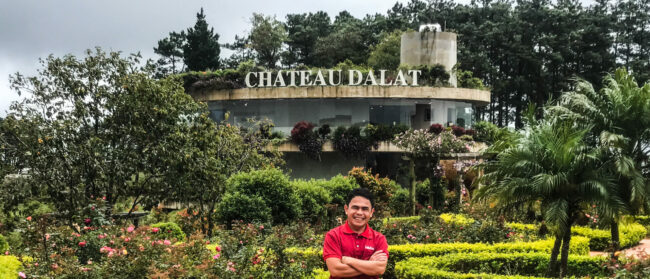It wasn’t until Khin Thein was put in a small prison cell that she finally felt at ease. Looking around, she saw faces that resembled her own, tanned from years of arduous work under the sun. In this small jail here in Mae Sot in Thailand’s Tak province, people understood her. Everyone, she said, spoke Myanmar. “I felt better because everyone else there was also Burmese,” Thein said.
During her ten years in Thailand, Thein has been arrested and sent back to Myanmar three times, but she always paid a smuggler to bring her and her family back across the Moei river, a body of water that divides one of Southeast Asia’s poorest nations from one of its most developed. Her income as a single parent in Myanmar would never be enough to provide for her four children, she said. Thailand offers double the salary.
Close to three million Myanmar are estimated to live and work in Thailand, toiling as construction workers, maids, fishermen and factory workers. To them, Thailand boasts better working conditions and better pay, not to mention protection from political prosecution by Myanmar’s military regime, which had kept the population under strict control until reforms began five years ago.
For Thailand, the Myanmar are labourers upon whose backs the country can build its economic success, without having to give much in return. Many are de facto slaves. In recent years, however, the Kingdom has shown signs of improvement, including an initial commitment to recognising Myanmar’s workers for their contributions. Under Thailand’s Prime Minister Yingluck Shinawatra, Myanmar labourers were guaranteed the Thai minimum wage of THB300 ($8.90) per day – a milestone for those migrants who vividly remember stories of obstreperous workers, killed by their Thai supervisors, their bodies left to rot in the forest.
In Mae Sot, migrant workers have spurred fast economic development. Border trade has skyrocketed over the past five years and a modern shopping mall has recently opened its doors to locals, migrants and visitors from Yangon, Myanmar’s commercial hub and largest city. To facilitate even more trade, the Thai government plans to build a new Special Economic Zone (SEZ) in Mae Sot, as well as a second bridge spanning the Moei river.
Thein is just one of tens of thousands of Myanmar who live in Mae Sot. The wealthier own shops and businesses; the most unfortunate – of which there are about 50,000 – inhabit Thailand’s largest refugee camp, Mae La, located just 20 kilometres north of the town centre.
Over the decades, migrant workers have left a deep impression on Mae Sot. Restaurants offering Myanmar tealeaf salads are ubiquitous, as are longyis, the traditional Myanmar skirts worn by both men and women. All street signs here are in Myanmar – only some also include Thai.
The road through Mae Sot is the quickest land link between Bangkok and Yangon. Before sanctions on Myanmar’s military regime were lifted, illegal border trade between Mae Sot and its counterpart Myawaddy was rife. Humans, drugs, cell phones, farming equipment and even soap – the illicit trade flourished. Since Myanmar started to open up, much of the border trade has become official.
Between 2011 and 2012, official border trade risenq to THB39 billion ($1.15 billion), a surge of about 80%. Last year, it was close to THB60 billion ($1.8 billion), with the bulk of revenue on the Thai side due to its exporting of manufactured or value-added goods including mobile phones, beer, petrol and diesel, as well as farming equipment and machinery. Myanmar, on the other hand, exports mainly cattle, peanuts, wooden products and dried peppers and onions, according to documents from Mae Sot’s customs department.
Just last year, hypermarket chain Tesco Lotus opened a modern mall in Mae Sot, featuring the town’s first movie theatre, as well as Western brands such as Dunkin’ Donuts. It is Myanmar who stroll through the aisles. Many have crossed the border on day trips just to see the mall. Hla Win Phyu and her husband, for example, got up early to drive their new car from their home in Yangon to see the Tesco. The six-hour ride, she said, was worth it. “I’ve never been here, but I heard that it’s much more modern than Yangon. This doesn’t exist in Yangon,” she said, comparing the prices of fans.
Areena Kongtrakul, a technical officer with Mae Sot’s customs department, said that relations have improved and that the border is busier than ever – too busy, in fact. As a native, she remembers Mae Sot as a quiet backwater town – unpaved roads, few businesses. Today, the streets and restaurants are bustling. The development, she said, came with the influx of Myanmar labourers.
With this year slated as the dawn of the Asean Economic Community (AEC), Bangkok is looking to further boost Thailand as a cheap and safe production base, to attract increased international investment and to further tap into the Myanmar market. In Tak province, these hopes are pinned on the SEZ. Construction is scheduled to begin this year on a plot of land spanning about 130 hectares. A five-storey building already houses the Special Economic Development Zone office.
According to Thailand’s Board of Investment, which is planning nine similar zones along the border, benefits for investors will include an eight-year corporate income tax exemption, import duty exemption on machinery and raw materials, an additional 50% reduction on corporate income tax for five years, double deductions from the cost of transportation, electricity and water supply for ten years, as well as an additional 25% cost deduction for the installation or construction of facilities and other non-tax incentives. Textiles, pharmaceuticals, fisheries, ceramics, plastics, jewellery and furniture are just a few industries on the list of those eligible to apply.
In an analysis, John Frangos and Michael Ramirez, consultants with law firm Tilleke and Gibbins, said that the government is trying to follow a regional trend towards liberalising trade and investment. “The combination of SEZs with the AEC’s lower trade barriers has significant potential to attract investment, generate employment and spur economic growth,” the pair wrote.
For Thailand’s Board of Investors, the SEZs are a priority. “Coupled with a good infrastructure and logistics system, these economic zones will become a key component in promoting not only the local economy, but also trade, cultural and social relations with our neighbouring countries,” said Hirunya Suchinai, the board’s director general.
The SEZs will give Thailand an edge over its regional competitors and help boost cross-border trade by 50%, to THB1.5 trillion, over coming years. “What we are doing here is providing investors who are considering Asia with the opportunity to start and grow their businesses in one of the world’s most active regions,” Suchinai said.
Currently, Thailand offers some of the best infrastructure in Asean, but is also known as the fourth most expensive production base, due to high labour costs. SEZs on the country’s borders with Myanmar, Laos and Cambodia would give investors access to low-cost migrant labour and high-quality infrastructure.
The SEZ, Kongtrakul said, would only employ documented migrant workers to ensure that they are paid the minimum wage and receive training needed for their jobs. “We will provide training and workshops so that employees are better equipped and have higher skills to do their jobs. Whether they are Burmese or Thai, we won’t discriminate,” Kongtrakul said.
Today, Thein says she feels safe in Mae Sot – both economically and personally. Each year she’s made a little more money than the last, moved into better housing, and now that her children are in their late teens and early 20s, they have started providing for her too. Her one-room dwelling in a quiet part of Mae Sot, where one Myanmar family lives adjacent to the next, is decorated with a pop art poster of Aung San Suu Kyi.
“I’ve seen a lot of improvements in ten years. Now there’s big buildings and modern shops, and my children’s pay is much better,” Thein said, referring to the minimum wage. Her eldest son, a construction worker, and her daughter, a seamstress in one of Mae Sot’s 300 garment factories, both hold work permits, and make almost twice as much as they would have five years ago.
Dusty trucks queue at the Thai-Myanmar Friendship bridge that crosses the Moei river, a rest for drivers at the international border after snaking their way through the area’s steep mountains. It may be the fastest land link to Yangon, but crossing the mountains is time consuming and logistically impractical. Once the SEZ is built and the AEC introduced, traffic will increase to an extent that will make the mountainous roads unsustainable, said Sakda Panwai, director of the Expressway Authority of Thailand’s research and development division, who is tasked with bettering the situation.
During a visit to determine the area’s future road development earlier this year, Panwai said that the roads through the mountains have always suffered in the rainy season, but were unsuitable for the increased heavy-load truck traffic the Thai government anticipates. “We will have to make it faster and smoother,” he said, adding that he envisions a tunnel. “We’re checking how this can be done best.”
To ease traffic snarls at the border crossing, construction of a second, THB3.9 billion ($115billion) Thai-Myanmar Friendship Bridge is already underway. “Ultimately,” Frangos and Ramirez wrote, “the SEZs’ success will depend on infrastrucutre development.”
Cheap labour paired with a developed production base has long been Mae Sot’s major asset, and the Thai government clearly intends to continue capitalising on it. And residents such as Thein welcome the development. Her life is still a daily struggle, but her overall living and working conditions are better than before. “The Thai government has made things easier for us,” she said.


